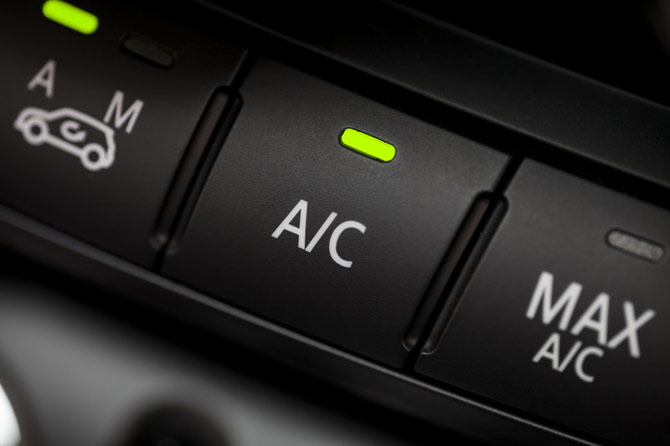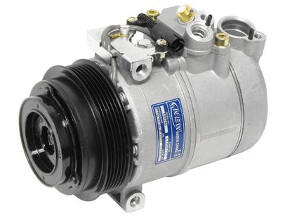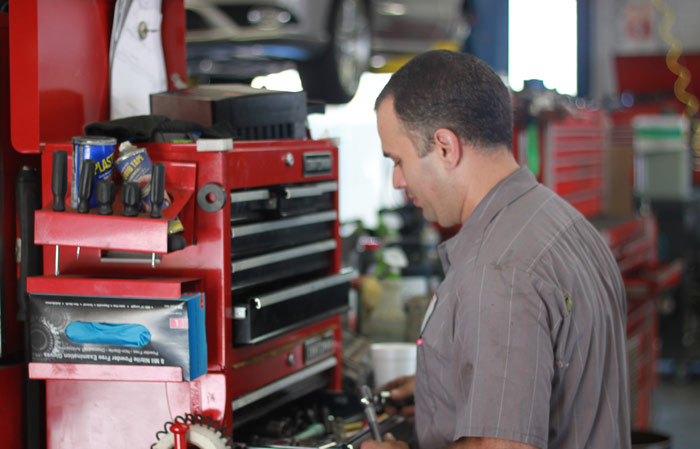
Auto AC Troubleshooting Guide
Auto AC Troubleshooting Guide
Some things you can check, even before bringing your car to us
There are many things that can cause your car’s AC (air conditioning) to malfunction. All Car wants to offer you some tips and guidance to help you and us determine what is wrong before you bring in your car. In another section on AC Maintenance and Recharging we discuss how your system works and give you advice on maintenance, now here is a troubleshooting section and checklist to help save time and money on diagnosis and repairs for your cars AC system.
The following auto AC troubleshooting guide, tips and worksheet will help to save you time and money once you schedule your AC check.
The most common problem experienced when turning on your auto’s air conditioning system is a lack of cool air or an intermittent level of temperature. There are many possible reasons for this but the most common in newer cars is simply a low Freon level. In which case, a relatively simple and affordable system recharge will solve the problem.
There are however other instances where the problem may be due to any of one or more different functions or parts malfunctioning. Some of the more common are small leaks in the system such as hoses or connector valves in the AC unit itself, the AC’s clutch could be malfunctioning. The AC canister could also be defective, etc.

A quick look at a typical modern auto AC compressor shown above shows the many different elements that must be connected in order for the compressor to do its job. Hoses must be connected and tightened properly, the belt has its own specific location to turn the unit, and various connectors for the AC recharge to function. Any one of these exhibiting a faulty connection or improper fitting could cause the unit to malfunction.
All Car Specialists use the most modern technology available that help save you money and speed up your repair by locating the exact problem as quickly as possible so the repair can be performed in as short as time as possible, getting you in and out without needless guess work.
While you will not be able to perform specific tests in troubleshooting your AC’s problem before you come into the shop, (and by the way, you shouldn’t attempt to do so), there are a few things you can look for and make note of in checking for a more serious obvious problem.
This troubleshooting checklist and visual/audio examination is not designed as a complete diagnosis, but rather a visual observation once you have made note of the symptoms on your checklist. This check can be performed with the engine running and your AC turned on to maximum by raising the hood on your auto and doing a visual and audio observation. But a warning – for safety, do not reach inside of the engine compartment at any time or touch any moving parts or get clothing near moving parts.
Instead just step back at a safe distance and look for the AC unit/compressor which should look something like the sample featured above, and do a simple visual/audio check of the unit looking for any signs of hose leakage, belt slipping or clutch activation or freezing of any moving part. The clutch is usually in the front part of the AC and should kick on and off at various times while the AC is on. The clutch should not be engaged when the AC is turned off.
One major potential problem that could be visually obvious right off is in the case of a frozen clutch-pulley and you her a squeal or see signs of smoke or unusual heat coming from the front of the AC as the belt tries to spin the clutch. If the clutch is frozen you should immediately turn off the AC and restart your engine. If the serpentine belt that is connected to the AC that spins the pulley is still frozen then immediately shut off your engine and call All Car Specialists right away.
Any attempts to drive your auto under those circumstances could cause severe damage to the engine, as if the belt breaks due to heat and friction of the frozen AC then none of your other components that rely on the belt would continue to function and that could be costly.
If you have any questions at all, you can always give us a call or come by our shop.



